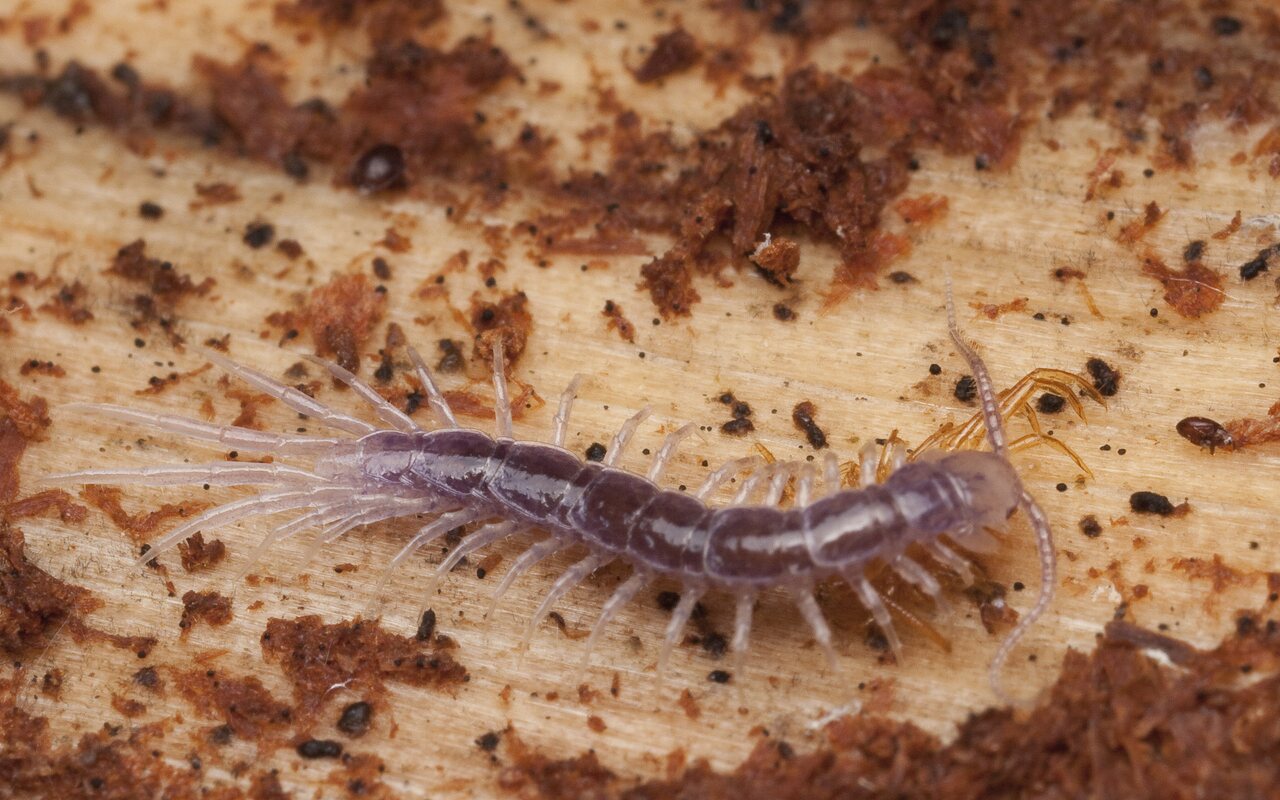
Lithobius forficatus · akmenlindė
Right after moulting.
- brown centipede, stone centipede
- Gemeine Steinläufer
- parastā kaulene
- drewniak widełkowiec, wij drewniak
- en.wikipedia.org/wiki/Lithobius_forficatus
- bmig.org.uk/species/lithobius-forficatus
- naturespot.org.uk/species/brown-centipede
The species is found mainly in Europe and North America, as well as the Hawaiian Islands. Like most lithobiids, it is found in the upper layers of soil, particularly under rocks and rotting logs. It is a predator, and its main diet consists of insects and invertebrates, including spiders, slugs, worms and flies. It has specially-adapted front legs which have evolved to resemble 'fangs' and they contain venom that allows the centipede to overpower its prey.
The species is between 18 and 30 mm long and up to 4 mm broad and is a chestnut brown coloration. Lithobiids leave the egg with seven pairs of legs, and each time they molt, they develop additional body segments with a new pair of legs on each. An adult will have a maximum of 15 pairs of legs. Lithobius forficatus may live for as long as five to six years.
‥